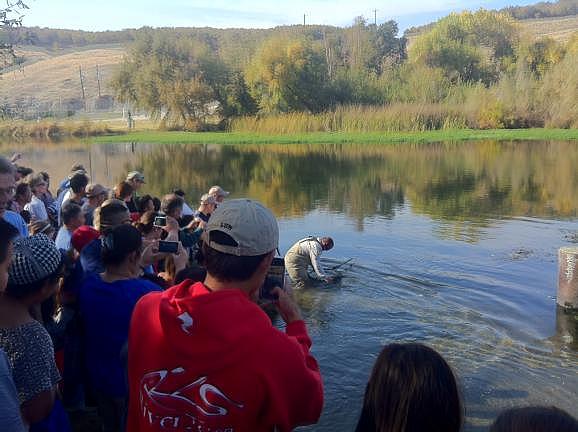Healthy Rivers Make Healthy People. Healthy People Build Stronger Communities.

Biologists with the California Department of Fish and Wildlife transport an adult Chinook salmon from a tank to the San Joaquin River. Photo Credit: Joe Moore/Valley Public Radio
The San Joaquin Valley - the region of California called “the nation's salad bowl” - wasn’t always a labyrinth of row crops and cattle. Historically millions of acres of wetlands shrouded the region, but stream and river diversion for irrigation dried all but five percent of the area’s waterways.
Read about the projects of other 2014 California Health Journalism Fellows.
The remnants of this once vast system of lakes, rivers and streams run through almost every major center of Central California from the Kern River to the San Joaquin River to the Merced River. But the reality of rivers in the San Joaquin Valley is less than desirable and in some cases rivers and lakes have completely dried up. All over the nation the case for restoring rivers has been taken up by federal and local partnerships. The challenge in the San Joaquin Valley is to bring revitalization efforts and water allocation for Valley farms into equilibrium.
If existing river revitalization efforts – parks, soccer fields, trails, etc. – in Central California are successful the public health benefits may be significant for a region of California with the lowest ratio of parkland to population, high obesity rates and other diseases.
Not only could walking, biking and alternate forms of transportation become routine, but improved air and water quality could become a reality. Not to mention the pride that each of these Valley communities could take in offering new green belts with access to local markets, recreational activities and social events. In communities like Bakersfield, Fresno, Merced and Visalia large sports parks, farmers markets and parkways are in order near each city’s river.
Waterways and Community Health
In this series Valley Public Radio's Ezra David Romero will explore Central California’s waterways to discover the interconnectedness of the state of a river and its correlation with the health of the community that surrounds it.
The healthy rivers series will not only tell the story of each river represented, but the stories of community members and how the state of the river in thier community has impacted their health. Each audio/web piece (three to five) may feature interactive online maps, online community forums, as well as audio diaries from members of the community.
